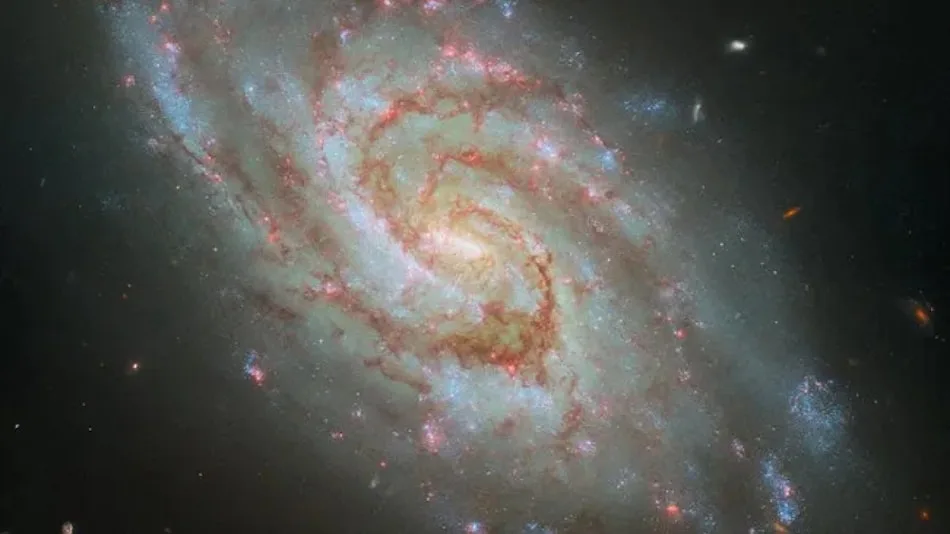NASA Hubble Space Telescope Captures a Stunning Spiral Galaxy 45 Million Light Years Away
Hubble’s new image of spiral galaxy IC 1954 reveals detailed star-forming areas and fresh insights.

Photo Credit: ESA/Hubble & NASA, D. Thilker, J. Lee and the PHANGS-HST Team
Spiral galaxy IC 1954 lies about 45 million light-years away in the constellation Horologium
Highlights
- IC 1954’s new image reveals intricate star-forming regions
- Hubble’s enhanced view of IC 1954 includes data from JWST
- Combined telescope data sheds light on star and matter formation
The NASA Hubble Space Telescope has delivered an incredible new image of the spiral galaxy IC 1954, located approximately 45 million light years from Earth in the Horologium constellation, also known as The Clock. Seen at a diagonal tilt, IC 1954’s bright core and sweeping spiral arms give it the appearance of a cosmic pendulum. This galaxy is filled with star-forming regions, visible as glowing pink patches in the image, offering a deeper insight into the formation of stars within galaxies.
Combined data from three advanced telescopes
The new observations of IC 1954 significantly improve upon earlier images. The inclusion of H-alpha data, highlighted by red regions in the image, marks the areas where hydrogen is abundant and stars are actively forming. These glowing areas, spread across the galaxy's disc, were explained by the European Space Agency (ESA) in a statement. They mentioned that some astronomers suggest the bright ‘bar’ across the galaxy could be an energetic star-forming zone positioned over the galactic centre.
The remarkable detail in the image was made possible by the combined efforts of three powerful telescopes. Alongside the Hubble Space Telescope, the James Webb Space Telescope and the Atacama Large Millimeter/submillimeter Array in Chile also contributed to this observation.
- Chandrayaan-3 Rover Discovers Ancient Crater Older Than SPA Basin
Together, these instruments are studying over fifty nearby galaxies, offering a comprehensive view across radio, infrared, optical, and ultraviolet wavelengths. This data is essential for understanding how matter moves through interstellar dust and gases in galaxies, aiding in the understanding of galaxy evolution.
The ESA also highlighted the importance of Hubble’s ultraviolet and optical capabilities in observing young stars and clusters. These wavelengths capture the most active periods of star formation. The data gathered by Hubble will be instrumental in furthering research on how stars evolve, building on the foundation set by the James Webb Space Telescope’s ongoing science missions.
- A Snowman-Shaped Asteroid Tumbles Past Earth at Incredible Speed
- Blue Origin’s New Glenn Rocket Moves Closer to First Orbital Launch


